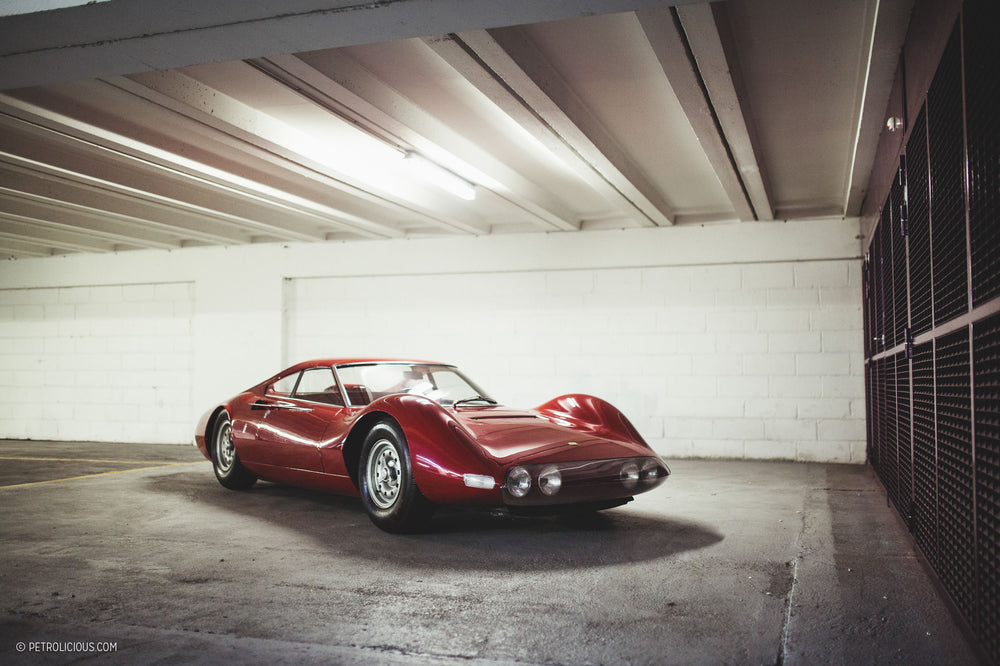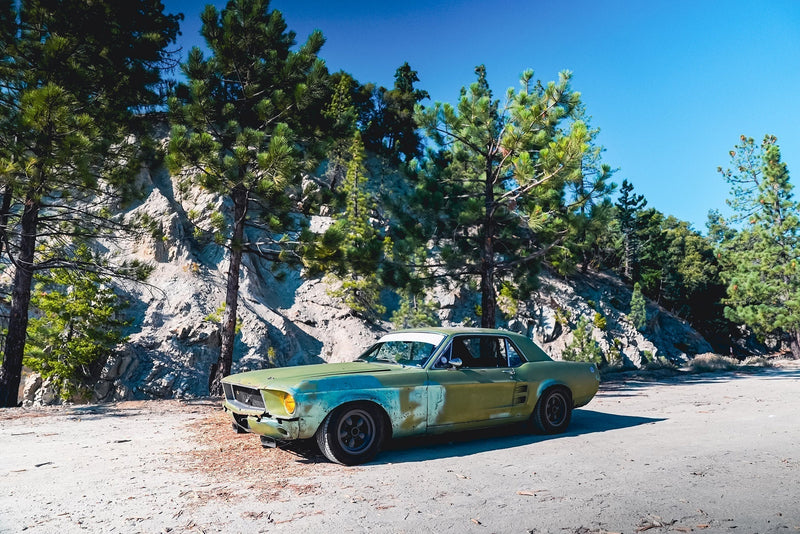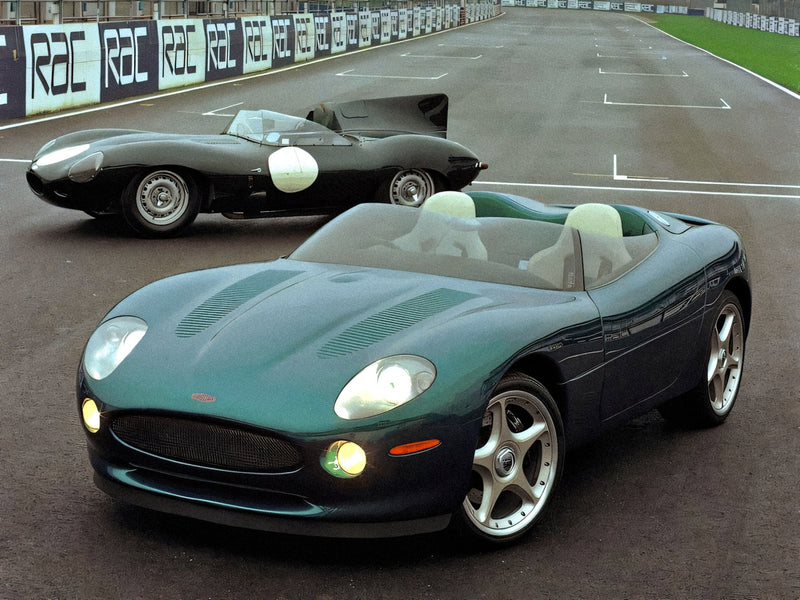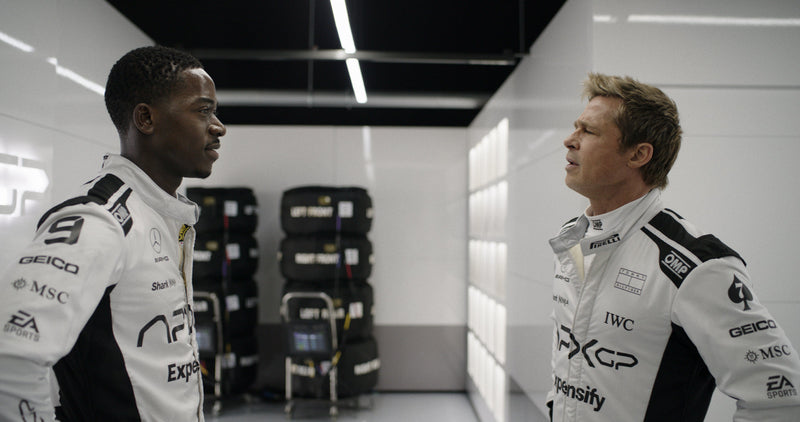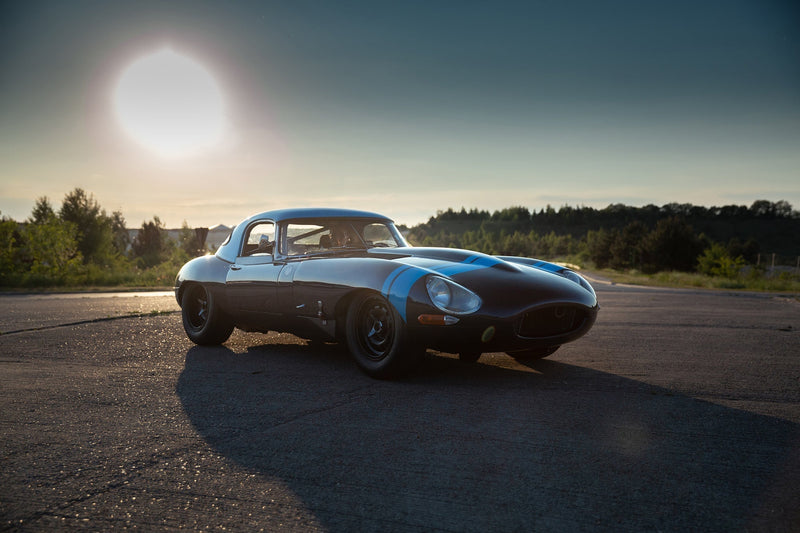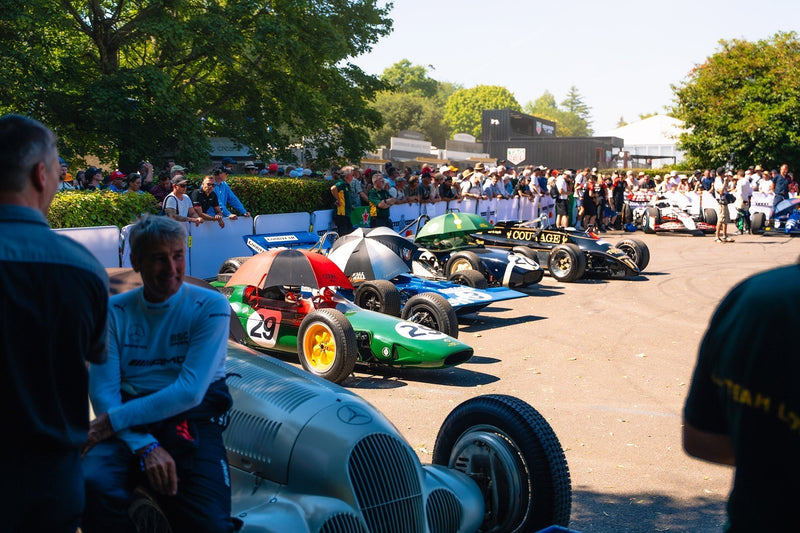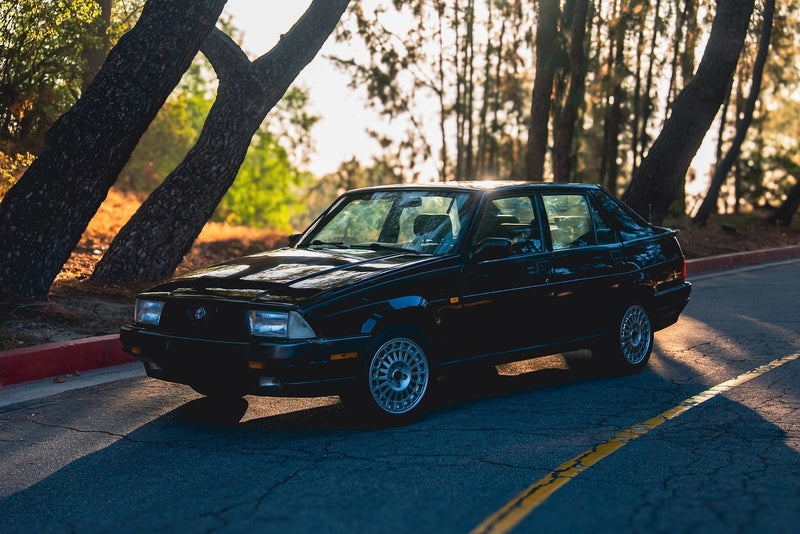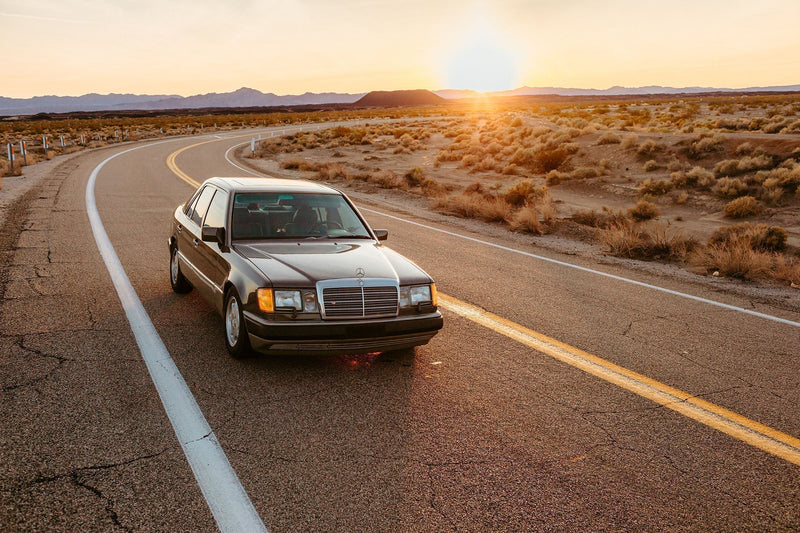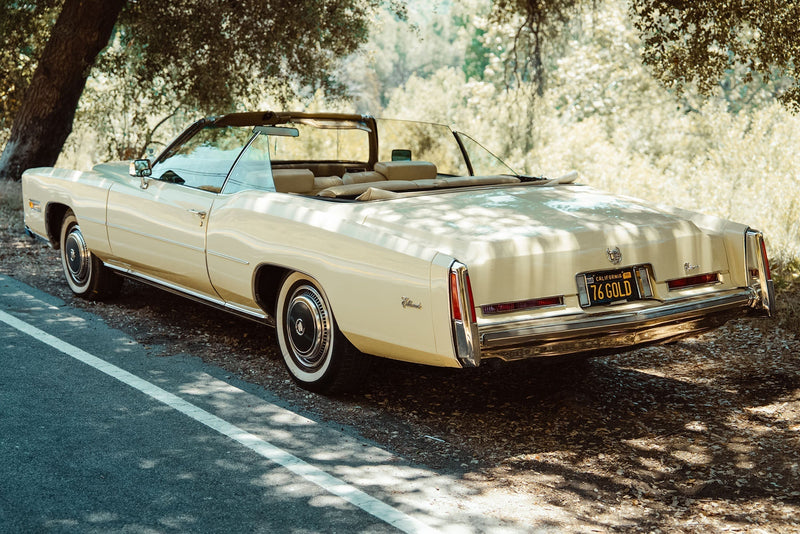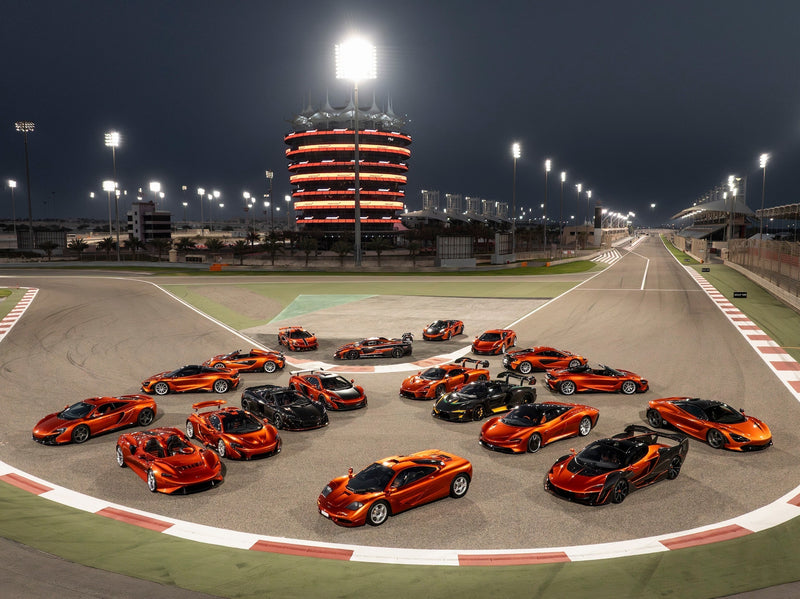
Mathieu Bonnevie: How was the car born?
Matthieu Lamoure: After the death of his son Dino, Enzo Ferrari wanted to start a new brand that would allow him to create cars that were markedly different from what was coming out of the Ferrari factory at the time. He asked his friend Sergio Pininfarina, son of Battista Farina, to design a new car, and this was their first prototype. It's funny; I met Piero Stroppa, who used to work at the Pininfarina design office, and he shared a few origin stories with me- those special "I was there" anecdotes that only pass through time verbally.
First, they released a drawing with a grill that strongly resembled that of the 330 P4 and the 250 GTO: the iconic oval those cars wore in the era. As you can see, that initial proposal was far-removed from the wedged Plexiglas nose worn by the real car. Enzo Ferrari had strongly negated the first design, saying “No, I want something really different, I don’t want it to look like a car that already exists.” Pininfarina went back to the drawing board and redesigned the front of the Prototipo, now with this unique bubble housing the four lights. There is a similar story concerning the evolution of the car's interesting rear section. At the beginning of the project, in the first exploratory drawings, the rear window was a long, oblique swoop that was wholly different from the final design you see here that has the short piece of curved vertical glass meeting the engine cover at a nearly right-angle. In addition to that, there is the position of the engine; this is the very first non-racing « Ferrari » in history to have a rear mid-engine layout.



So the car that we have here is the first actual car produced in the Dino lineage, born from the final drawing accepted by Enzo Ferrari. The car was officially revealed by Pininfarina in 1965 on the international motor show circuit, including the storied venues of Torino, New York, Paris, and Geneva.
The first chassis from the Ferrari factory was from a competition 206 S, which was then paired with a competition-spec V6 motor. There is compelling evidence that this is the same engine that ran the 1000 km of Monza in 1965, with Giancarlo Baghetti and Giampiero Biscaldi, driving for Scuderia Ferrari.







MB: They took the engine from the race car to put it in the prototype?
ML: Exactly, and then, the ACO, the Automobile Club de l’Ouest, wanted to name a spot inside the Le Mans racetrack, the Sergio Pininfarina square, as a tribute. The ACO asked Pininfarina if he would like to give them a car for display, to which he accepted and provided this.
MB: What a nice present!


ML: Indeed, a very nice present, but this car was a prototype so mostly useless. The car was handed over with the authorization of Enzo Ferrari as he provided the chassis and the engine, and the ACO has been the owner since the donation in 1967. The car was on display for 20 years in the Le Mans museum, but the ACO has since decided to part with it as this is the only one that has no history related to the 24 hour race. This car was the only one that they felt didn't truly belong; the museum is interested in acquiring new cars that have a real story with the 24 hours of Le Mans - ones with racing history at the track. Also, they want to restore the museum, so they sold the Dino to help with the funding that project.
So the car has exceptional provenance, a crystal clear, known history, and it is sold with the permission of Pininfarina. But above all of this is the important place occupied by this car in Ferrari's history, because this prototype is the precursor to all design that would follow at Ferrari and Pininfarina. For starters, this car was the start of years of transversely-mounted rear-mid engine layouts in a lot of Ferraris that lasted until the end of the 328's production in 1989; Pinanfarina's Fiat Dino Spider borrows an extremely similar front-end design; and until the 288 GTO we stay with this kind of exterior design: very feminine, very soft, with sensual curves, and I heard in a conference from Mr. Fioravanti, who worked at the Pininfarina design office, that the Dino prototype foreshadowed the whole style of the brand because of how heavily this car's guidelines inspired Ferrari. Until the F40, they used the same windshield as the 308, and the cockpit cell was exactly same as in the 308, which of course is very closely linked to the Dino's styling. To get to the point, we can go very far tracing out the impact of this car! This one is the mother of 20, 25 years of design at Ferrari and Pininfarina, so this is an extremely important car in the whole history of Ferrari, in Pininfarina’s design, but also in the Italian design on a broader level.
MB: This type of car, it doesn’t look like what you used to have, and is not intended to be on road as it's a museum car, so what kind of person do you think it's for?




ML: We can speak about this car like a true work of art - we are right in the thick of it - because it’s a car made to show the style of Ferrari’s future. It is a concept car that you can put in your living room like a sculpture, like any work of art, or you can make it drivable, or you can do both!. The engine is empty - there are no pistons - but it is not a lot of work to make it drivable, especially when you consider that cost in relation to the price this car will go for. This car can win all of the concours d'elegance shows since it never participated in any. It is in fully original condition, and we can obviously see that only a few people have ever even sat in it. This car was built by true designers. Piero Stroppa said that this car was meant to sit a little higher up in the back; if you look, it is a bit sagged. He told me « you will have to tell the next owner that the car was made for the rear wheel to perfectly fit into the arch, so he will have to raise it a bit if he really wants to be faithful to what Enzo Ferrari wanted ».
MB: In regards to the interest aroused by this car, how much might the future owner need to spend to acquire it?
ML: We estimate it between 4 and 8M€. The estimate isn’t precise because, of course, there is no reference on the market, there is no equivalent, so it can theoretically fetch any price, but I expect it to at least exceed the lowest estimate. It is well worth it. When I remember the Triposto, that owner wanted 25M, and car went for 20M. Seriously, when we compare them we are in the same kind of design, we have a competition engine that can be brought back to life, so whoever buys the car, and if he wants to drive it, he will have a truly unique car that will win all the most prestigious concours d'elegance in the world. He will be invited everywhere. The car is offered with no reserve because no-one can accurately forecast its price. The market will take care of that.









